#House of Hauteville
Photo
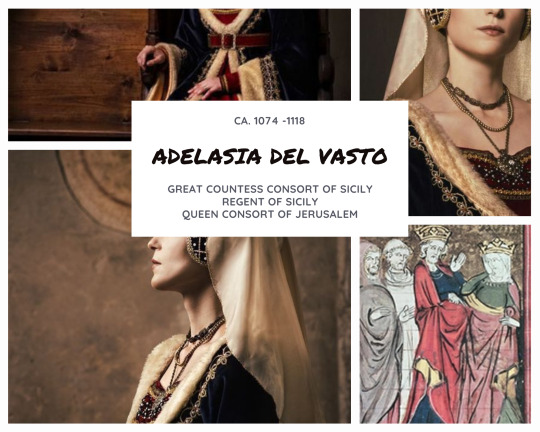
“In the year of the Incarnation of the Savior 1089, Count Roger took a new wife, his former one, Eremberga, daughter of Count William of Mortain, having died. Her name was Adelaide and she was the niece of Boniface, that most renowned marquis of Italy; to be precise, she was the daughter of Boniface’s brother. She was a young woman with a very becoming face.”
Goffredo Malaterra, The Deeds of Count Roger of Calabria and Sicily and of his Brother Duke Robert Guiscard, book 4, ch. 14
Adelasia (or Adelaide) was born around 1074 in Northwestern Italy. Her parents were Manfredi (or Manfredo) Incisa del Vasto, a member of the Aleramici House, and his unnamed wife. From her paternal side, she was the niece of Bonifacio, Marquis of Savona and of Western Liguria, “the most renowned marquis of Italy” (in Goffredo Malaterra, The Deeds of Count Roger ..., book 4, ch. 14). Adelasia had a brother, Enrico, and two unnamed sisters.
Following their father’s tragic death (killed together with his brother Anselmo during a popular uprising in 1079), the siblings were entrusted to the guardianship of their uncle Bonifacio, although quite soon Enrico decided to travel all the way to Southern Italy to help the Norman leaders Robert and Roger Hauteville in their conquest.
The Aleramic scion was gifted with the counties of Butera and Paternò for his services. But the del Vasto family fortunes were destined to grow as Enrico’s sisters married into the newly established Hauteville comital dynasty. His unnamed sisters were betrothed to the Great Count Roger’s bastard sons Goffredo (who would die young without getting the chance to marry) and Giordano, while Adelasia married the Great Count himself.
In 1089 Roger was at his third marriage. His first (and beloved) wife Judith d'Évreux had given him only daughters before dying in 1076. The following year, he married Eremburge de Mortain, who bore him his first legitimate son, Malgerio, and died in 1089. With just a son (who would die young around 1098) as heir, it isn’t surprising Roger remarried. The choice of an Italian wife (his previous ones had been fellow Frenchwomen) was part of the Hautevilles’ strategies to latinize Southern Italy by welcoming Gallo-Italic immigrants with the hoped result to counter the already existing Greek-Arabic majority.
Adelasia would bore Roger two sons: Simone (born in 1093) and Ruggero (born in 1095 – although Malaterra records “in the year of the Incarnation of the Lord 1098, Countess Adelaide became pregnant again by Count Roger” in Goffredo Malaterra, The Deeds of Count Roger ..., book 4, ch. 26) and at least one daughter: either Matilda (born between 1093-1095, future Countess consort of Alife) or Maximilla (birth date unknown, future wife of Count Palatin Ildebrandino VI Aldobrandeschi), or perhaps both of them.
The Great Count died on June 22nd 1101 in Mileto (Calabria). Following her late husband’s wishes, 27-years old Adelasia assumed the regency of the county for her 8-years old son, Simone, who became the new Count of Sicily. She smartly surrounded herself with capable and trusted men, like her brother Enrico, or Christodulos, a Greek Orthodox (possibly a Muslim convert) admiral who had been nominated amiratus (Grand Dignitary) of Sicily already under Ruggero I.
Little Count Simone’s rulership was tragically shortlived as the child died in Mileto, on September 1105, at just 12 years old. He was succeeded by his younger (and, according to the sources, better-suited) brother, Ruggero. As the new Great Count was even younger (10 years old), Adelasia resumed her role of Regent. It is in this period, precisely in 1109, that the Warrant of Countess Adelasia, Europe’s oldest known paper document, was issued.
Although a more generous patron for the Latin clergy, Adelasia maintained a good relationship with the Muslim and Greek communities, granting them freedom of worship and a relevant administrative autonomy (so that in a Greek-Arab charter dated 1109 she is called malikah). She was well aware that, following the change of ownership, her adoptive country was in need of a stabler bureaucratic apparatus, justice administration and a proper capital city. Mileto had been dear to her late husband, but Adelasia had different ideas. Although she preferred Messina for its strategic position, she realised Palermo, having been the capital of the Sicilian Emirate and thus adorned with splendid buildings, was better suited to become the capital of the Hauteville counts. In 1112 she moved the capital from Mileto to Palermo and that same year she stepped back from the Regency, allowing her son Ruggero to start ruling by his own right.
Not used to sitting around and willing to increase her son’s power and fortunes, the dowager Countess accepted to marry in 1113 the childless and older Baodouin I, King of Jerusalem. Prenuptial agreements stated that, in the absence of issue, the Kingdom of Jerusalem would have been inherited by Ruggero and his descendants. This royal marriage proved to be a faux pas as Boudouin was still legally married to his second wife, Arda of Armenia. The King had merely decided to chase her away, sending poor Arda to live in a nunnery, but then simply allowed her to go back to her father’s home in Constantinople without properly annulling the marriage and casting the shadow of bigamy over the new marital union. Moreover, always in need of money to pay for the troops, soon Baodouin spent all of Adelasia’s dowry. Taking advantage of a temporary illness, Papal Legate Arnoul de Chocques convinced the King to annul the marriage so that his wife could be sent back to Sicily. Despite complying, the King was not the least happy as he wished to milk some more the of his Norman wife’s riches, but as the royal union was still childless, Pope Pasquale II could not risk seeing the Hauteville expand their influence over the Holy Land in a possible near future.
In 1117, after four dissatisfying years as Queen Consort of Jerusalem, Adelasia returned back to Palermo. She spent the last year of her life devoting herself to religion. She died in Patti (near Messina) on April 16th 1118 and was buried in the city’s cathedral, where she still lies.
In 1130, her beloved son Ruggero would be crowned the first King of Sicily. According to chronicler William of Tyre, Ruggero never forgot the humiliation his mother had to suffer in Jerusalem so that he and his heirs never truly reconciled with the Kingdom of Jerusalem (“Qua redeunte ad propria, turbatus est supra modum filius; et apud se odium concepit adversus regnum et ejus habitatores, immortale” William of Tyre, Chronicon, XI.29)
Sources
Brugnoli Alessio, La tomba di Adelasia del Vasto
Catlos Brian A., Infidel kings and unholy warriors : faith, power, and violence in the age of crusade and jihad
Curtis Edmund, Roger of Sicily and the Normans in Lower Italy, 1016-1154
Edgington Susan B., Baldwin I of Jerusalem, 1100-1118
Garulfi Carlo Alberto, I documenti inediti dell'epoca normanna in Sicilia
Hayes Dawn Marie, Roger II of Sicily. Family, Faith, and Empire in the Medieval Mediterranean World
Houben Hubert – Loud Graham A. - Milburn Diane, Roger II Of Sicily: A Ruler Between East And West
Malaterra Goffredo, The Deeds of Count Roger of Calabria and Sicily and of his Brother Duke Robert Guiscard
Pontieri Ernesto, ADELAIDE del Vasto, in Dizionario Biografico degli Italiani, vol. 1
Tocco Francesco Paolo, Ruggero I, conte di Sicilia e Calabria, in Dizionario Biografico degli Italiani, vol. 89
Tocco Francesco Paolo, Ruggero II, re di Sicilia, in Dizionario Biografico degli Italiani, vol. 89
William of Tyre, Chronicon
#women#history#historicwomendaily#women in history#historical women#Adelasia del Vasto#House of Hauteville#ruggero i#Ruggero II#baldwin i of jerusalem#simone di sicilia#norman swabian sicily#people of sicily#women of sicily#myedit#historyedit
25 notes
·
View notes
Photo

Tancred of Hauteville, Prince of Galilea. By Merry-Joseph Blondel.
Tancred was a leader of the First Crusade who later became prince of Galilee and regent of the Principality of Antioch. He was the son of Emma of Apulia, nephew of Bohemond of Tarentum and grandson of Robert Guiscard.
#Merry-Joseph Blondel#outremer#crusades#kingdom of heaven#Tancrède de Hauteville#house of hauteville#prince de tiberiade#prince of galilea#first crusade#principality of antioch
19 notes
·
View notes
Text
Jean Baptiste Hugo announced as Guest of Honor at Barricades 2024

Barricades 2024 is pleased to announce Jean Baptiste Hugo as one of our Guests of Honor for this year's convention. Jean Baptiste Hugo is the great-great-grandson of Victor Hugo. He has extensively photographed Hugo's home in exile on Guernsey, a project about which he said this: “In 2014, I was about to start a series of photographs of Hauteville House, where Victor Hugo stayed in exile for 15 years. I had the intention, picturing in my mind the dark gothic rooms, to use the legendary black and white 400 Tri-X Kodak film, known for its grainy quality and its rich black tones. It just happened that around that same period I started looking into the extraordinary colour possibilities offered by digital photography, having considered it for years , I must admit, as very inferior to black and white film. The introduction I was given to digital colour photography inspired me enough to try and capture as faithfully as I could the colourful atmosphere of my ancestor’s folly on Guernsey and, I am glad I did, as it allowed me to engage in an exploration of colour and texture in a very creative way which I am still pursuing today through other photographic subjects.”
#mine#barricadescon#les miserables#les mis#Jean Baptiste Hugo#guest of honor#Barricades 2024#Guernsey#Hauteville House
156 notes
·
View notes
Text

Hauteville House,Guernsey, the home of French classic novelist Victor Hugo,author of literary historical classic, Les Miserables
Hauteville House,St Peter Port,Guernsey,Channel Islands,GY1 1DG,UK (Though the house is owned by the city of Paris,the French capitol.)
Museum and French consulate residence
2 notes
·
View notes
Photo

Constance I (2 November 1154 – 27 November 1198) was reigning Queen of Sicily from 1194–98, jointly with her spouse from 1194 to 1197, and with her infant son Frederick II, Holy Roman Emperor, in 1198, as the heiress of the Norman kings of Sicily. She was also Holy Roman Empress and later Dowager by marriage to Henry VI, Holy Roman Emperor.
When she was young, as the sole heir to the throne of Sicily, she didn't marry until she was 30 because of an ominous prophecy; shortly after becoming empress she was involved in the succession war against her illegitimate nephew King Tancred of Sicily for the Sicilian throne, during which, rarely for an empress, she was captured during such an offensive campaign, though finally without danger she escaped. In the history of Holy Roman Empire only two empresses had ever been captured, the other being her mother-in-law Empress Beatrice.
Shortly before ascending the Sicilian throne, at the advanced age of 40, she gave birth to her only child – Frederick, thus continuing the bloodlines of both Holy Roman Empire and Kingdom of Sicily.
After the death of her husband, she gave up the throne of the Holy Roman Empire in the name of her son, despite him being King of the Romans, in favor of her younger brother-in-law Philip of Swabia, making her son merely King of Sicily; meanwhile she still claimed herself Holy Roman Empress Dowager. Passing away merely one year later, she entrusted her young son to Pope Innocent III.
18 notes
·
View notes
Text
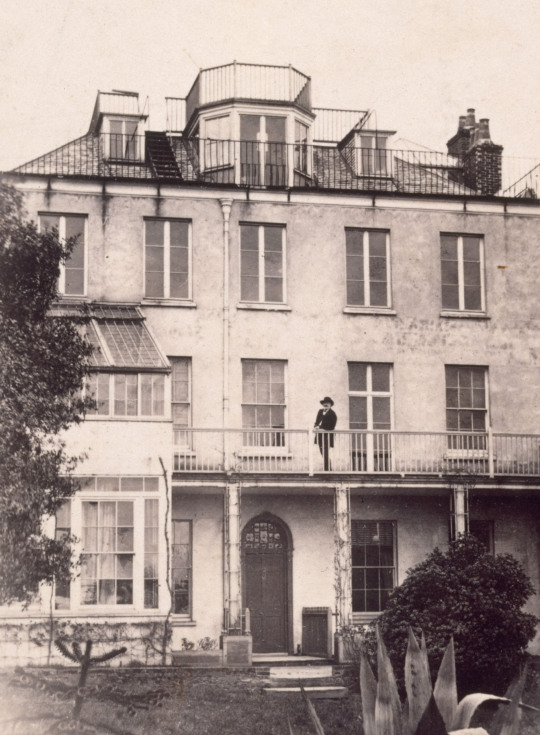
Epígrafe
"Enquanto existir nas leis e nos costumes uma organização social que cria infernos artificiais no seio da civilização, juntando ao destino, divino por natureza, um fatalismo que provém dos homens; enquanto não forem resolvidos os três problemas fundamentais a degradação do homem pela pobreza, o aviltamento da mulher pela fome, a atrofia da criança pelas trevas; enquanto, em certas classes, continuar a asfixia social ou, por outras palavras e sob um ponto de vista mais claro, enquanto houver no mundo ignorância e miséria, não serão de todo inúteis os livros desta natureza."
Epígrafe de "Os Miseráveis"; o livro foi escrito em grande parte durante o exílio do escritor na ilha de Guernesey (1856-1870), durante o qual residiu em Hauteville House. Arsène Garnier fotografou-o na varanda da casa, em 1868.
0 notes
Text
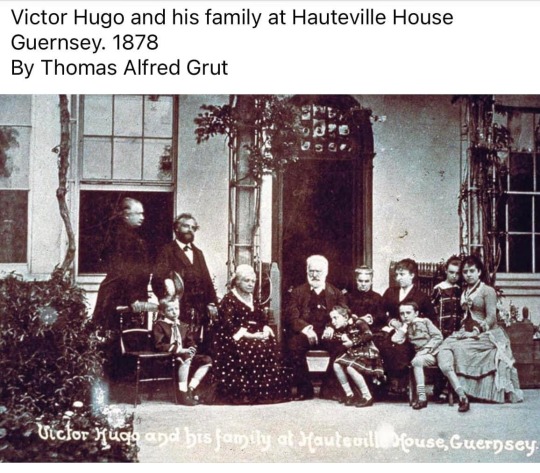
#Victor Hugo#Hauteville House#Guernsey#1878#old photos#ancestors alive!#what is remembered lives#memory & spirit of place#vintage photography#channel islands#Thomas Alfred Grut
1 note
·
View note
Text
C'est une péninsule !
C’est une péninsule !

View On WordPress
#Alderney#Aurigny#Îles St Marcouf#Barfleur#Bataille de La Hougue#Blanche Nef (naufrage)#Cap de la Hague#Cap Lévi#Carentan les marais#Cherbourg#Cotentin#Fleur de Lampaul#Goury#Granville#Guernesey#Guillaume le conquérant#Hauteville house#Jersey#La Luna (naufrage)#Louis XIV#Phare de Gatteville#Raz Blanchard#Raz de Barfleur#Saint Simon#St Vaast la Hougue#Sybil of Wivenhoe#Tatihou#Tom Cunliffe#Tourville#Victor Hugo
0 notes
Text
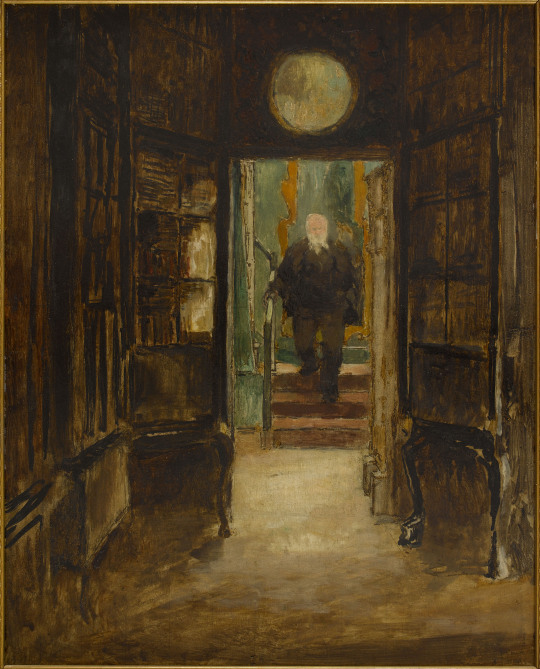
Georges-Victor Hugo - Victor Hugo coming down from his study at Hauteville House (ca. 1880)
143 notes
·
View notes
Text
forget hauteville house. THIS is the absolutely essential destination for every les mis enthusiast
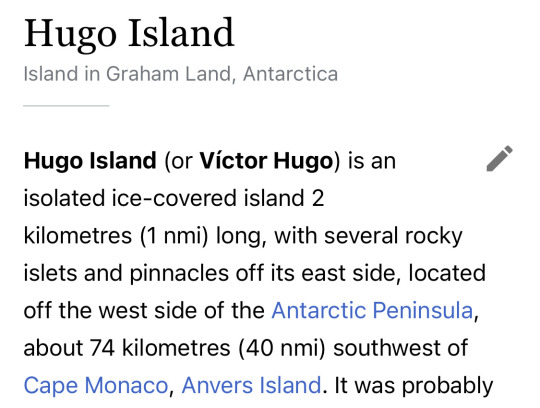

#it was named that because the guy who charted it was married to hugo’s granddaughter!! fascinating#les mis#les misèrables#victor hugo
117 notes
·
View notes
Text

LES MIS LETTERS IN ADAPTATION - Preface (Les Miserables 1935)
So long as there shall exist, by virtue of law and custom, decrees of damnation pronounced by society, artificially creating hells amid the civilization of earth, and adding the element of human fate to divine destiny; so long as the three great problems of the century—the degradation of man through pauperism, the corruption of woman through hunger, the crippling of children through lack of light—are unsolved; so long as social asphyxia is possible in any part of the world;—in other words, and with a still wider significance, so long as ignorance and poverty exist on earth, books of the nature of Les Misérables cannot fail to be of use.
HAUTEVILLE HOUSE, 1862.
#Les Mis#Les Miserables#Les Mis Letters#Les Mis Letters in Adaptation#Victor Hugo#Les Mis 1935#Les Miserables 1935#WE'RE BACK BABY#I didn't start immediately last year so I'm going to do the chapters I missed last year.#And then take a break until we catch up to where I stopped making gifs.#Hopefully this will be easier on me and less stressful.#I am determined to finish this.#Anyway! LM 1935 bad!#pureanonedits#lesmisedit#lesmiserablesedit#lesmis1935edit#lesmiserables1935edit
41 notes
·
View notes
Photo

Et quia solum Guilielmum Capuanorum Principem habebat superstitem, veritus ne eumdem conditione humanae fragilitatis amitteret, Sibiliam sororem Ducis Burgundiae duxit uxorem, quae non multo post Salerni mortua est, et apud Caveam est sepulta. Tertio Beatricem filiam Comitis de Reteste in uxoris accepit, de qua filiam habuit, quem Constantiam appellavit.
Chronicon Romualdi II, archiepiscopi Salernitani, p. 16
Beatrice was born around 1135 in the county of Rethel (northern France) from Gunther (also know as Ithier) de Vitry, earl of Rethel, and Beatrice of Namur.
On her mother’s side, Beatrice descended from Charlemagne (through his son, Louis the Pious), while on the paternal side she was a grandniece of Baldwin II King of Jerusalem (her paternal grandmother Matilda, titular Countess of Rethel, was the King’s younger sister). The Counts of Rethel were also vassals of the powerful House of Champagne, known for its successful marriage politics (Count Theobald IV of Blois-Champagne’s daughter, Isabelle, would marry in 1143 Duke Roger III of Apulia, eldest son of King Roger II of Sicily).
In 1151, Beatrice married this same Roger. The King of Sicily was at his third marriage at this point. His first wife had been Elvira, daughter of King Alfonso VI the Brave of León and Castile and of Galicia, who bore him six children (five sons and one daughter). However, when four of his sons (Roger, Tancred, Alphonse and the youngest, Henry) died before him, leaving only William as his heir, Roger II must have feared for his succession. In 1149, the King then married Sibylla, daughter of Duke Hugh II of Burgundy. She bore him a son, Henry (named after his late older brother), and two years later died of childbirth complications giving birth to a stillborn son. As this second Henry died young too, Roger thought about marrying for a third (and hopefully last) time.
It is possible that Roger’s choice of his third wife had been influenced by the future bride’s family ties with the Crusader royalties as Beatrice was related with both Queen Melisende of Jerusalem and the Queen’s niece Constance of Hauteville, ruling Princess of Antioch. Constance was also a first cousin once removed of Roger, who had (unsuccessfully) tried to snatch the Antiochian principality from her when her father Bohemond II was killed in battle 1130, leaving his two years old daughter as heir.
Beatrice bore Roger only a daughter, Constance, who was born in Palermo on November 2nd 1154. This baby girl (who would one day become Queen of Sicily) never knew her father as he died on February 26th.
Nothing certain is known about her widowed life, although we can suppose she took care of her only daughter. Beatrice died in Palermo on March 30th 1185, living enough to see Constance being betrothed to Emperor Frederick Barbarossa’s son, Henry.
The body of the Dowager Queen was laid to rest in the Chapel of St. Mary Magdalene, together with her predecessor, Elvira, and her step-children, Henry, Tancred, Alphonse and Roger. Through her daughter, Beatrice would become Emperor Frederick II’s grandmother.
Sources
Cronica di Romualdo Guarna, arcivescovo Salernitano Chronicon Romualdi II, archiepiscopi Salernitani Versione di G. del Re, con note e dilucidazione dello stesso
Garofalo Luigi, Tabularium regiae ac imperialis capellae collegiatae divi Petri in regio panormitano palatio Ferdinandi 2. regni Utriusque Siciliae regis
Hayes Dawn Marie, Roger II of Sicily. Family, Faith, and Empire in the Medieval Mediterranean World
Houben Hubert, Roger II Of Sicily: A Ruler Between East And West
SICILY/NAPLES: COUNTS & KINGS
Walter Ingeborg, BEATRICE di Rethel, regina di Sicilia, in Dizionario Biografico degli Italiani, vol. 7
#historicwomendaily#women#history#women in history#historical women#House of Hauteville#Roger II of Sicily#Beatrice of Rethel#norman swabian sicily#costanza i#people of sicily#women of sicily#myedit#historyedit
30 notes
·
View notes
Text
Since many people enjoyed the Peach Blossom Springs build by Epicwork, here are some more builds that they’ve made over the years, along with some historical background on the builds, if anyone is interested:
The Thousand-Year Capital City - Luoyang (千年帝都·洛阳)
undefined
youtube
In ancient times, Luoyang served as capital city in Xia dynasty/夏朝 (2070 BC - 1600 BC; the existence of this dynasty is debated among scholars due to insufficient archaeological evidence), Shang dynasty/商朝 (1600 BC - 1046 BC; Luoyang was one of the two capital cities), Western Zhou dynasty/西周 (1046 BC - 771 BC; Luoyand was again one of two capital cities), Eastern Zhou dynasty/东周 (770 BC - 256 BC), Western Han dynasty/西汉 (briefly starting from 202 BC), Eastern Han dynasty/东汉 (25 AD - 220 AD), Kingdom (dynasty if going by the traditional official historiography) of Wei/曹魏 (220 AD - 266 AD; this is part of the famous Three Kingdoms period), Western Jin dyansty/西晋 (266 AD - 213 AD), Northern Wei dynasty/北魏 (386 AD - 534 AD; Luoyang became its capital in 494 AD), Sui dynasty/隋朝 (581 AD - 618 AD; Luoyang became the capital in 605 AD), Tang dynasty/唐朝 (618 AD - 907 AD, including the brief Zhou/武周 during which Wu Zetian was the first female emperor; Luoyang was the capital or one of the capitals starting from 657 AD), Later Liang dynasty/后梁 (907 AD - 923 AD), Later Tang dynasty/后唐 (923 AD - 937 AD), Later Jin dynasty/后晋 (936 AD - 947 AD).
The build here (minus the giant dragon statue of course) is based on Luoyang during Tang dynasty, possibly around the time when Emperor Gaozong or Wu Zetian was in power, due to the presence of the enormous standing Buddha statue (Wu Zetian believed in Buddhism, while most other emperors of Tang dynasty put more emphasis on Daoism, since they claimed to be descendants of the founder of Daoism, Laozi, whose real name was Li Er).
The Garden of Gardens - The Old Summer Palace (万园之园·圆明园)
undefined
youtube
The Old Summer Palace or Yuanmingyuan/圆明园 was a garden constructed during Qing dynasty that incorporated elements of Chinese architecture and Western architecture. The garden used to contain many priceless artifacts, the vast majority of which were stolen by British and French forces in 1860, and the garden itself was burned to the ground and thoroughly destroyed. As a result of this purposeful destruction, only a few broken pillars remained, standing as a grim reminder to the plundering and destruction that were the results of Western imperialism.

Epicwork tried to reference old photos and historical records when recreating the garden here in this build.
The quote at the beginning of the video comes from a letter written by Victor Hugo to Captain Butler (boldened portion is the quote):
To Captain Butler
Hauteville House,
25 November, 1861
You ask my opinion, Sir, about the China expedition. You consider this expedition to be honourable and glorious, and you have the kindness to attach some consideration to my feelings; according to you, the China expedition, carried out jointly under the flags of Queen Victoria and the Emperor Napoleon, is a glory to be shared between France and England, and you wish to know how much approval I feel I can give to this English and French victory.
Since you wish to know my opinion, here it is:
There was, in a corner of the world, a wonder of the world; this wonder was called the Summer Palace. Art has two principles, the Idea, which produces European art, and the Chimera, which produces oriental art. The Summer Palace was to chimerical art what the Parthenon is to ideal art. All that can be begotten of the imagination of an almost extra-human people was there. It was not a single, unique work like the Parthenon. It was a kind of enormous model of the chimera, if the chimera can have a model. Imagine some inexpressible construction, something like a lunar building, and you will have the Summer Palace. Build a dream with marble, jade, bronze and porcelain, frame it with cedar wood, cover it with precious stones, drape it with silk, make it here a sanctuary, there a harem, elsewhere a citadel, put gods there, and monsters, varnish it, enamel it, gild it, paint it, have architects who are poets build the thousand and one dreams of the thousand and one nights, add gardens, basins, gushing water and foam, swans, ibis, peacocks, suppose in a word a sort of dazzling cavern of human fantasy with the face of a temple and palace, such was this building. The slow work of generations had been necessary to create it. This edifice, as enormous as a city, had been built by the centuries, for whom? For the peoples. For the work of time belongs to man. Artists, poets and philosophers knew the Summer Palace; Voltaire talks of it. People spoke of the Parthenon in Greece, the pyramids in Egypt, the Coliseum in Rome, Notre-Dame in Paris, the Summer Palace in the Orient. If people did not see it they imagined it. It was a kind of tremendous unknown masterpiece, glimpsed from the distance in a kind of twilight, like a silhouette of the civilization of Asia on the horizon of the civilization of Europe.
This wonder has disappeared.
One day two bandits entered the Summer Palace. One plundered, the other burned. Victory can be a thieving woman, or so it seems. The devastation of the Summer Palace was accomplished by the two victors acting jointly. Mixed up in all this is the name of Elgin, which inevitably calls to mind the Parthenon. What was done to the Parthenon was done to the Summer Palace, more thoroughly and better, so that nothing of it should be left. All the treasures of all our cathedrals put together could not equal this formidable and splendid museum of the Orient. It contained not only masterpieces of art, but masses of jewelry. What a great exploit, what a windfall! One of the two victors filled his pockets; when the other saw this he filled his coffers. And back they came to Europe, arm in arm, laughing away. Such is the story of the two bandits.
We Europeans are the civilized ones, and for us the Chinese are the barbarians. This is what civilization has done to barbarism.
Before history, one of the two bandits will be called France; the other will be called England. But I protest, and I thank you for giving me the opportunity! the crimes of those who lead are not the fault of those who are led; Governments are sometimes bandits, peoples never.
The French empire has pocketed half of this victory, and today with a kind of proprietorial naivety it displays the splendid bric-a-brac of the Summer Palace. I hope that a day will come when France, delivered and cleansed, will return this booty to despoiled China.
Meanwhile, there is a theft and two thieves.
I take note.
This, Sir, is how much approval I give to the China expedition.
Regrettably, none of the priceless artifacts that were stolen had been returned by any of the countries involved, and instead became a major part of the museum collections of various Western countries. The small portion of artifacts that had returned to China were mostly bought from auctions by Chinese people. To this day, British and French mainstream media refuse to fully acknowledge the plundering and destruction of Yuanmingyuan.
Lijiang, the Ancient Mystic City (中国风·丽江古镇)
undefined
youtube
I thought the translation for the title should’ve been “the Ancient Mystical City”, but it’s okay. This is Epicwork’s first Chinese architecture-style build that became popular. This build is based on the real life Old Town of Lijiang (丽江古镇), which is a UNESCO World Heritage Site. The real life Old Town of Lijiang has architecture that incorporated features of Han culture and Naxi culture.

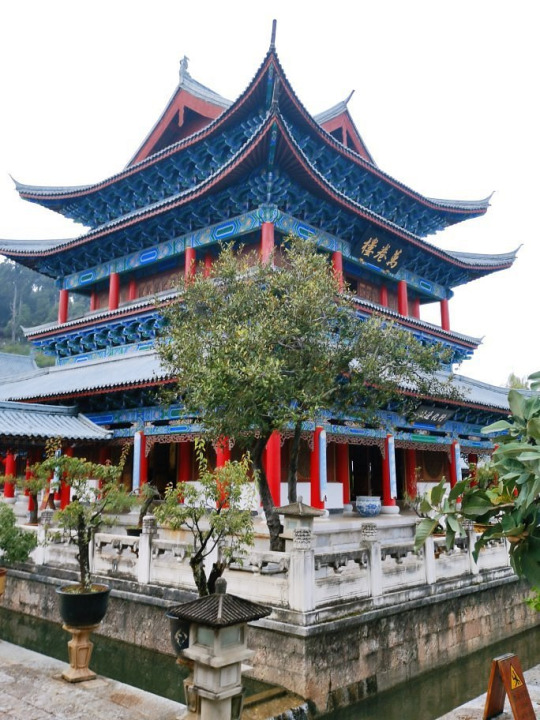
Finally, a build that doesn’t really fit the topic of this blog, but personally I really liked it, and just in time for October...
Devil Island (恶魔岛)
undefined
youtube
The cathedral in this build is based on Duomo di Milano.
#epicwork china#minecraft builds#the thousand year capital city Luoyang#the garden of gardens The Old Summer Palace#the ancient mystic city Lijiang#devil island#luoyang#the old summer palace#lijiang#old town of lijiang#chinese architecture#gothic architecture#chinese history#chinese culture#minecraft#yuanmingyuan#Youtube
157 notes
·
View notes
Text
Victor Hugo wrote from Jersey, "You are restoring Voltaire to us, supreme consolation for France, humbled and silent." Would it be well to publish this compromising letter? Dumas wanted to. He loved Hugo's poems, Les Chatiments, stanzas of which he recited on every occasion, for he had brought back from Belgium steady animosity against the Empire...
But the police held the press in an iron grip and so Dumas listened to the counsels of prudence and let the great Victor's letter go unpublished. Later he regretted it and three years after, in March, 1857, he seized the opportunity to express again his admiration for the exile. When the actress Augustine Brohan dared to attack Hugo in Le Figaro, he took her violently to task and even ventured to demand of the Théâtre-Français that this person should not act in any of his plays. He had of course neither the right nor the power to prevent her, but Hugo was grateful for the gesture. "I love you more every day," he wrote from Hauteville House, "not alone because you are one of the brilliant lights of my century, but because you are one of its consolations."- The Fourth Musketeer
23 notes
·
View notes
Text

A clipping (supposedly) excluded from Reliquat des Misérables, dated between 1856-1857. [Source, Hauteville House archives]
•
According to the archive, when translated this handwritten inscription reads:
"... hideous inseparables, the Euryale and Nisus of crime, Bastien and Robert, Malaguti and Ratta, Lesage and Soufflard, Lacenaire and Avril."
It remains unclear which specific characters Hugo had in mind for this short extract, but I'm eager to discuss with others! You can find my initial thoughts below:
Naturally, when considering the emphasis on active "crime" in this context, the most obvious choice of characters for this passage would be the rogues of Patron-Minette. However, Hugo's consistent labelling of pairs here likely suggests that he was referring to a specific duo rather than a collective group. This leaves me a little stumped… I can't recall any two members of Patron-Minette having a particular or noteworthy close bond. Sure, the loyalty among these thieves is one thing, but in the final version of the novel, I find no compelling evidence that any two of these criminal characters could be described as inseparable. While Hugo does depict the gang as "le polype monstrueux du mal habitant la crypte de la société," it's not quite the same as labelling them "inséparables."
Therefore, I'm more inclined to believe that Hugo might be referring to M and Mme Thénardier with these words. Many lines describing the couple in the final version of Les Misérables mirror the sentiments expressed in this omitted section, such as "This man and this woman were ruse and rage wedded—a hideous and terrible team."
It is worth noting though that Hugo mostly mentions pairs of men only in this passage, which slightly complicates my above interpretation. Still, given how Hugo describes Mother Thénardier using consistently masculine terminology, I can't help but wonder if this was an intentional choice. Euryale being a woman and also a gorgon is of particular interest too…(?)
In any case, I'd love to hear any further thoughts and speculations on this matter! I'm not entirely confident in my knowledge of all the comparative figures that Hugo lists here— aside from Lacenaire and Avril— so am eager to learn if there is any further symbolism or deeper connections that I might be missing!
#les miserables#les mis#reliquat des miserables#the brick#patron minette#patron-minette#thenardier#the original manuscript#cut content
14 notes
·
View notes
Text
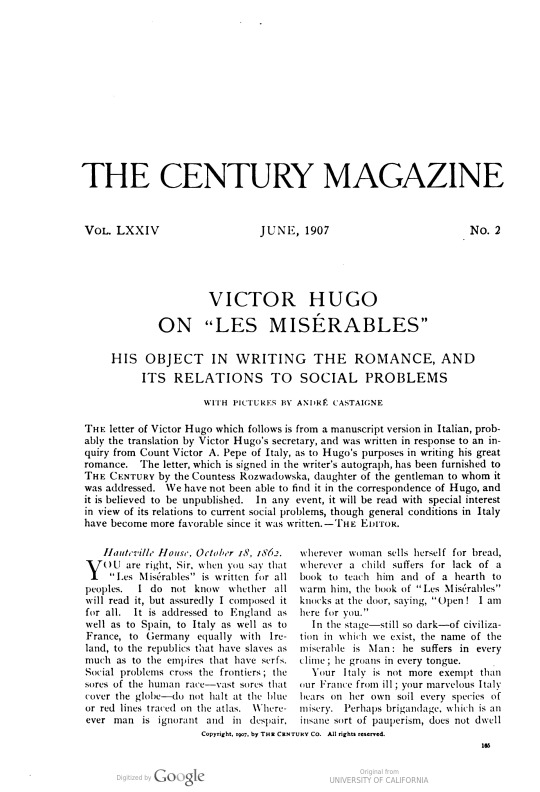




June 1907 Century Magazine published a letter said to be addressed to an Italian Count Victor A. Pepe, written by Victor Hugo, and translated into Italian "probably" by Hugo's secretary. The Count's daughter, Countess Rozwadowska, came into possession of the letter, believed to be unpublished, and shared it with the Century Magazine. However, I haven't been able to find out any more about Pepe or Rozwadowska.
You will probably recognize the letter in question (which I will put below the cut) as the one Hugo wrote to the publisher of the Italian translation of Les Miserables, M. Daelli of Milan. Perhaps it was first published in English in 1907 but it had definitely been published in French as early as 1890, at the end of the edition of Les Mis published by Émile Testard and I believe it was included in the original 1862/3 edition of the Italian translation, based on a google translate of this auction listing. The last mystery for me is the signature, which doesn't look to me like Victor Hugo's signature at all.
The letter was apparently quite interesting to English-speaking readers and I found several newspaper articles discussing its publication. If you know anything else about this letter please share!! I'm sure I've read something else about it...somewhere....
HAUTEVILLE-HOUSE, October 18, 1862.
You are right, sir, when you tell me that Les Misérables is written for all nations. I do not know whether it will be read by all, but I wrote it for all. It is addressed to England as well as to Spain, to Italy as well as to France, to Germany as well as to Ireland, to Republics which have slaves as well as to Empires which have serfs. Social problems overstep frontiers. The sores of the human race, those great sores which cover the globe, do not halt at the red or blue lines traced upon the map. In every place where man is ignorant and despairing, in every place where woman is sold for bread, wherever the child suffers for lack of the book which should instruct him and of the hearth which should warm him, the book of Les Misérables knocks at the door and says: "Open to me, I come for you."
At the hour of civilization through which we are now passing, and which is still so sombre, the miserable's name is Man; he is agonizing in all climes, and he is groaning in all languages.
Your Italy is no more exempt from the evil than is our France. Your admirable Italy has all miseries on the face of it. Does not banditism, that raging form of pauperism, inhabit your mountains? Few nations are more deeply eaten by that ulcer of convents which I have endeavored to fathom. In spite of your possessing Rome, Milan, Naples, Palermo, Turin, Florence, Sienna, Pisa, Mantua, Bologna, Ferrara, Genoa, Venice, a heroic history, sublime ruins, magnificent ruins, and superb cities, you are, like ourselves, poor. You are covered with marvels and vermin. Assuredly, the sun of Italy is splendid, but, alas, azure in the sky does not prevent rags on man.
Like us, you have prejudices, superstitions, tyrannies, fanaticisms, blind laws lending assistance to ignorant customs. You taste nothing of the present nor of the future without a flavor of the past being mingled with it. You have a barbarian, the monk, and a savage, the lazzarone. The social question is the same for you as for us. There are a few less deaths from hunger with you, and a few more from fever; your social hygiene is not much better than ours; shadows, which are Protestant in England, are Catholic in Italy; but, under different names, the vescovo is identical with the bishop, and it always means night, and of pretty nearly the same quality. To explain the Bible badly amounts to the same thing as to understand the Gospel badly.
Is it necessary to emphasize this? Must this melancholy parallelism be yet more completely verified? Have you not indigent persons? Glance below. Have you not parasites? Glance up. Does not that hideous balance, whose two scales, pauperism and parasitism, so mournfully preserve their mutual equilibrium, oscillate before you as it does before us? Where is your army of schoolmasters, the only army which civilization acknowledges?
Where are your free and compulsory schools? Does every one know how to read in the land of Dante and of Michael Angelo? Have you made public schools of your barracks? Have you not, like ourselves, an opulent war-budget and a paltry budget of education? Have not you also that passive obedience which is so easily converted into soldierly obedience? military establishment which pushes the regulations to the extreme of firing upon Garibaldi; that is to say, upon the living honor of Italy? Let us subject your social order to examination, let us take it where it stands and as it stands, let us view its flagrant offences, show me the woman and the child. It is by the amount of protection with which these two feeble creatures are surrounded that the degree of civilization is to be measured. Is prostitution less heartrending in Naples than in Paris? What is the amount of truth that springs from your laws, and what amount of justice springs from your tribunals? Do you chance to be so fortunate as to be ignorant of the meaning of those gloomy words: public prosecution, legal infamy, prison, the scaffold, the executioner, the death penalty? Italians, with you as with us, Beccaria is dead and Farinace is alive. And then, let us scrutinize your state reasons. Have you a government which comprehends the identity of morality and politics? You have reached the point where you grant amnesty to heroes! Something very similar has been done in France. Stay, let us pass miseries in review, let each one contribute his pile, you are as rich as we. Have you not, like ourselves, two condemnations, religious condemnation pronounced by the priest, and social condemnation decreed by the judge? Oh, great nation of Italy, thou resemblest the great nation of France! Alas! our brothers, you are, like ourselves, Miserables.
From the depths of the gloom wherein you dwell, you do not see much more distinctly than we the radiant and distant portals of Eden. Only, the priests are mistaken. These holy portals are before and not behind us.
I resume. This book, Les Misérables, is no less your mirror than ours. Certain men, certain castes, rise in revolt against this book,—I understand that. Mirrors, those revealers of the truth, are hated; that does not prevent them from being of use.
As for myself, I have written for all, with a profound love for my own country, but without being engrossed by France more than by any other nation. In proportion as I advance in life, I grow more simple, and I become more and more patriotic for humanity.
This is, moreover, the tendency of our age, and the law of radiance of the French Revolution; books must cease to be exclusively French, Italian, German, Spanish, or English, and become European, I say more, human, if they are to correspond to the enlargement of civilization.
Hence a new logic of art, and of certain requirements of composition which modify everything, even the conditions, formerly narrow, of taste and language, which must grow broader like all the rest.
In France, certain critics have reproached me, to my great delight, with having transgressed the bounds of what they call "French taste"; I should be glad if this eulogium were merited.
In short, I am doing what I can, I suffer with the same universal suffering, and I try to assuage it, I possess only the puny forces of a man, and I cry to all: "Help me!"
This, sir, is what your letter prompts me to say; I say it for you and for your country. If I have insisted so strongly, it is because of one phrase in your letter. You write:—
"There are Italians, and they are numerous, who say: 'This book, Les Misérables, is a French book. It does not concern us. Let the French read it as a history, we read it as a romance.'"—Alas! I repeat, whether we be Italians or Frenchmen, misery concerns us all. Ever since history has been written, ever since philosophy has meditated, misery has been the garment of the human race; the moment has at length arrived for tearing off that rag, and for replacing, upon the naked limbs of the Man-People, the sinister fragment of the past with the grand purple robe of the dawn.
If this letter seems to you of service in enlightening some minds and in dissipating some prejudices, you are at liberty to publish it, sir. Accept, I pray you, a renewed assurance of my very distinguished sentiments.
VICTOR HUGO.
10 notes
·
View notes